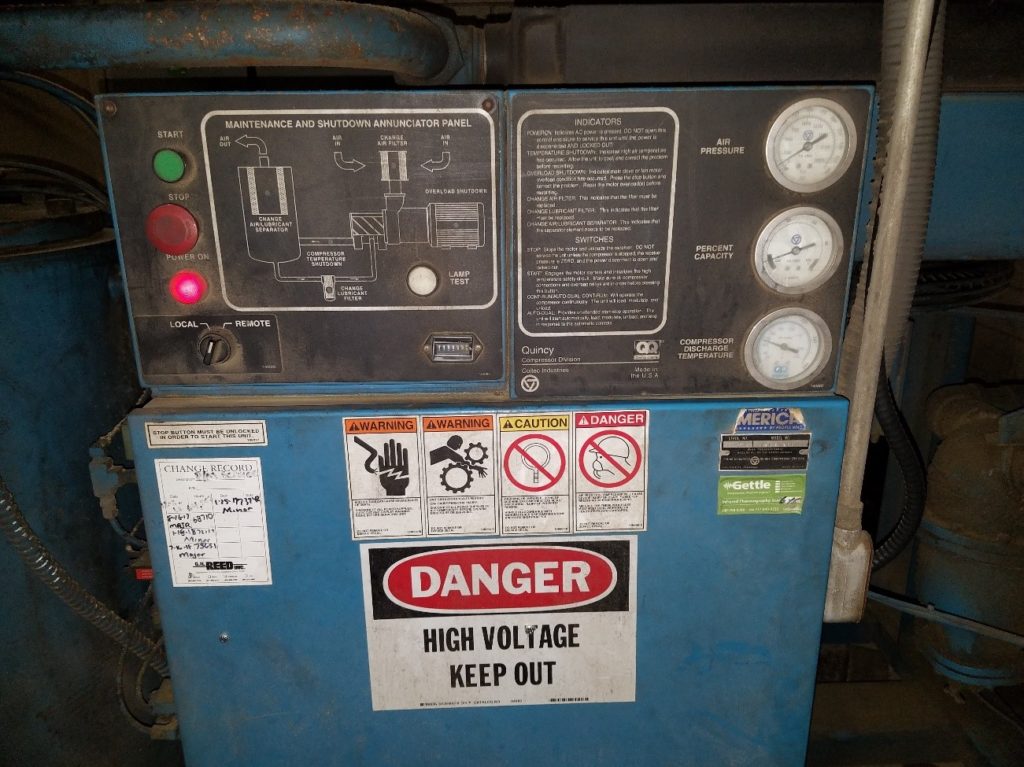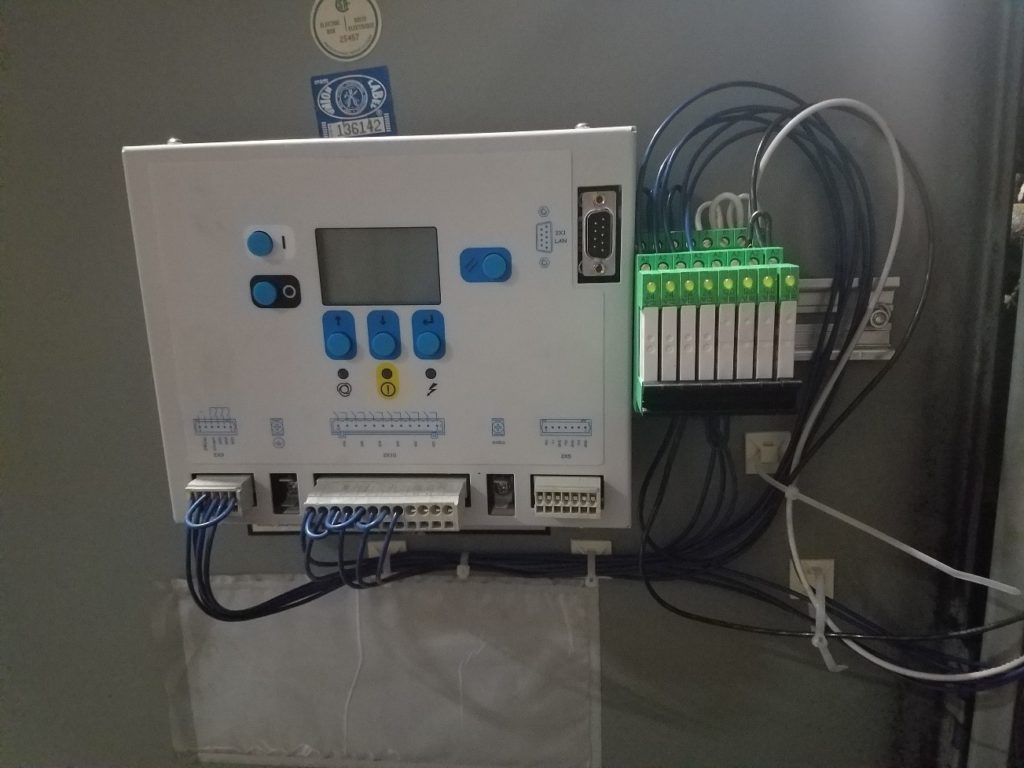June 11, 2019
Case Study – Networking a New Compressor to an Old System
SHARE THIS POST

Networking a New Air Compressor to an Old Compressed Air System
A local manufacturing company needed to increase their production capacity. With more production equipment, the demand for compressed air increased. They wanted something big enough to support them now, with an eye towards further expansion in the future. After reviewing the customer’s needs, and data logging the system, a Quincy QSI-750 Power$ync air compressor was installed with a new storage tank and flow controller. C.H. Reed’s sales team wanted to ensure system redundancy and energy efficiency, so our Controls Group was tasked with finding a way to network the new compressor with the old compressed air system.
Prior to purchasing the QSI-750, the customer was using a Quincy QSI-500 and a QSI-370. These were both older machines with gauges, pressure switches, etc. No microprocessor, no embedded networking capabilities. However, they were factory made to interact with the Quincy Demand-A-Matic, an early version of a central controller. The “Local/Remote” switches allowed the machines to run based on their local pressure switch, or the signal from the Demand-A-Matic. This was far from what was needed to interact with the new air compressor though.

Solution – CANbox Networking Interface
Quincy Compressor offers an interface for applications like this. The CANbox is a networking interface that takes the network commands from the master machine and translates them into digital outputs to control another air compressor. The network will issue four basic commands to the slave machine:
- Go to Network Control
- Start/Load
- Unload
- Stop
In return, the network looks for 3 responses from the slave machine:
- Proof of Start
- Proof of Load
- No Fault Present
How it Works
The CANbox must be tied into the machine controls so that it can perform the functions of starting, stopping, loading, and unloading the compressor via its digital outputs. It also must get a digital signal to its inputs to prove the compressor started, loaded, and that there are no faults present. Maintaining independent control of the compressors was a high priority as well. In the event of some catastrophic failure, switching the compressors back to local control needed to be a fast, easy process.
The factory-installed “Local/Remote” switches were repurposed to switch the machines between using the local pressure switches and being under network control. When the switch is in the “Local” position, power to the CANbox is shut off and all compressor controls are unchanged. When the switch is flipped to “Remote”, the CANbox powers up and begins receiving signals from the master compressor. When the “Go to Network Control” signal is received, a relay is activated that disables the local start button and the local pressure switch. These functions will now be handled by the CANbox. The “Start” command energizes a 2 second pulse output that simulates pressing the “Start” button on the machine. The control relays on the compressor send a signal back to the CANbox “Proof of Start” input to verify the compressor is started. Once the master compressor sees that the “Proof of Start” has been received, it will issue the “Load” Command. The CANbox activates its “Load” output, which is now in place of the local pressure switch. The part of the compressor control circuit that energizes the load solenoid also sends a signal to the CANbox “Proof of Load” input so the master compressor can verify that the compressor loaded. The compressor is now running and loaded under network control.
To unload the compressor, the master compressor issues an “Unload” command and the CANbox simply shuts off the “Load” output and the compressor unloads. This is verified by the loss of the “Proof of Load” input. As the compressor runs unloaded, the network continues to monitor system pressure. If the compressor is needed again, it will simply reload. If it is not needed, the master compressor will issue the “Stop” command and the CANbox will activate the “Stop” output. This is a 2 second pulsed output that was tied in series with the local stop button, so the output simulates pressing the Stop button.

End Result
With our CANboxes in place, the master compressor is programmed to know that we have approximate flow rates of 750cfm, 370cfm, and 500cfm. The master compressor will look at the air system demand and decide which compressor, or combination of compressors, will best satisfy the demand. This way, there are never more air compressors running than are necessary. This results in money saved on utility bills, maintenance spend, and general wear & tear of the compressed air system.
The CANbox can be adapted to fit virtually any air compressor, regardless of brand or control type. This means every customer can benefit from having a networked compressed air system. Whether their compressor room is true blue Quincy, or a mixture of brands and sizes, we can offer the efficiency and reliability of a complete compressed air network.
For more information on how to network a compressed air system, contact our Controls Group by emailing Controls@CHReed.com.
Search
Categories
Get a consultation
Related Posts
The 3 Distinct Advantages of Hydraulic Powered Pumps
Recently, C. H. Reed helped a major printing operation install a new ink pumping system. The new system needed to transfer four colors of high viscosity, heat-set ink to their three presses, drawing the ink from multiple 5,000…
Simple Ways to Reduce Waste in Your Spray Finishing System
In today’s demanding manufacturing landscape, it can be convenient to adopt a “cut-costs-at-all-costs” mentality, justifying questionable means for the sake of leaner production, a lower bottom line and increased profitability. Regrettably, those efforts can interfere…
What You Need to Know About Air-Powered Pressure Washers
Pressure washers are great solutions for your average cleaning applications, but what tool do you turn to for your more challenging applications? There are many instances where it is simply impossible to use a traditional…